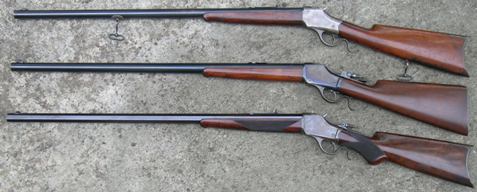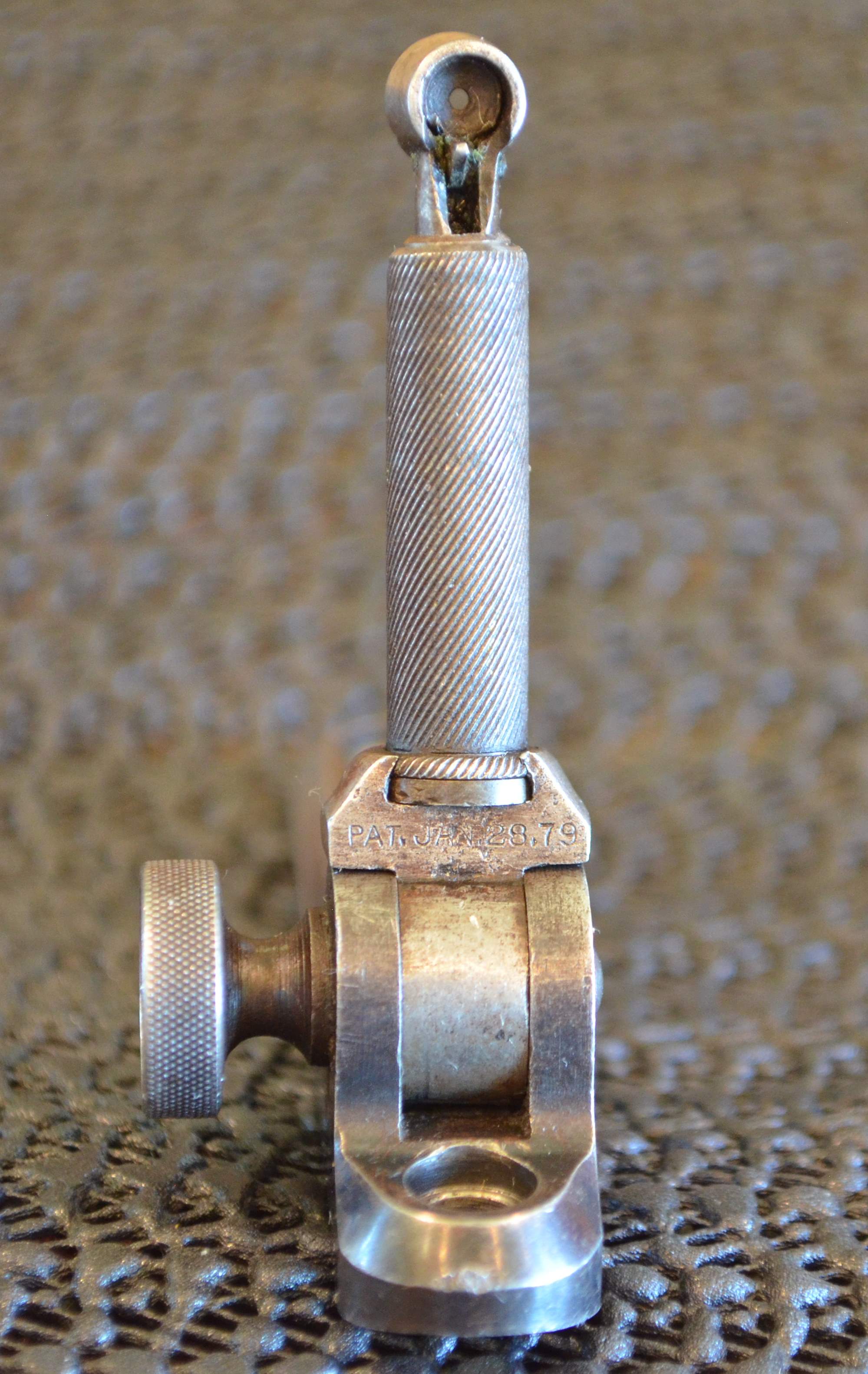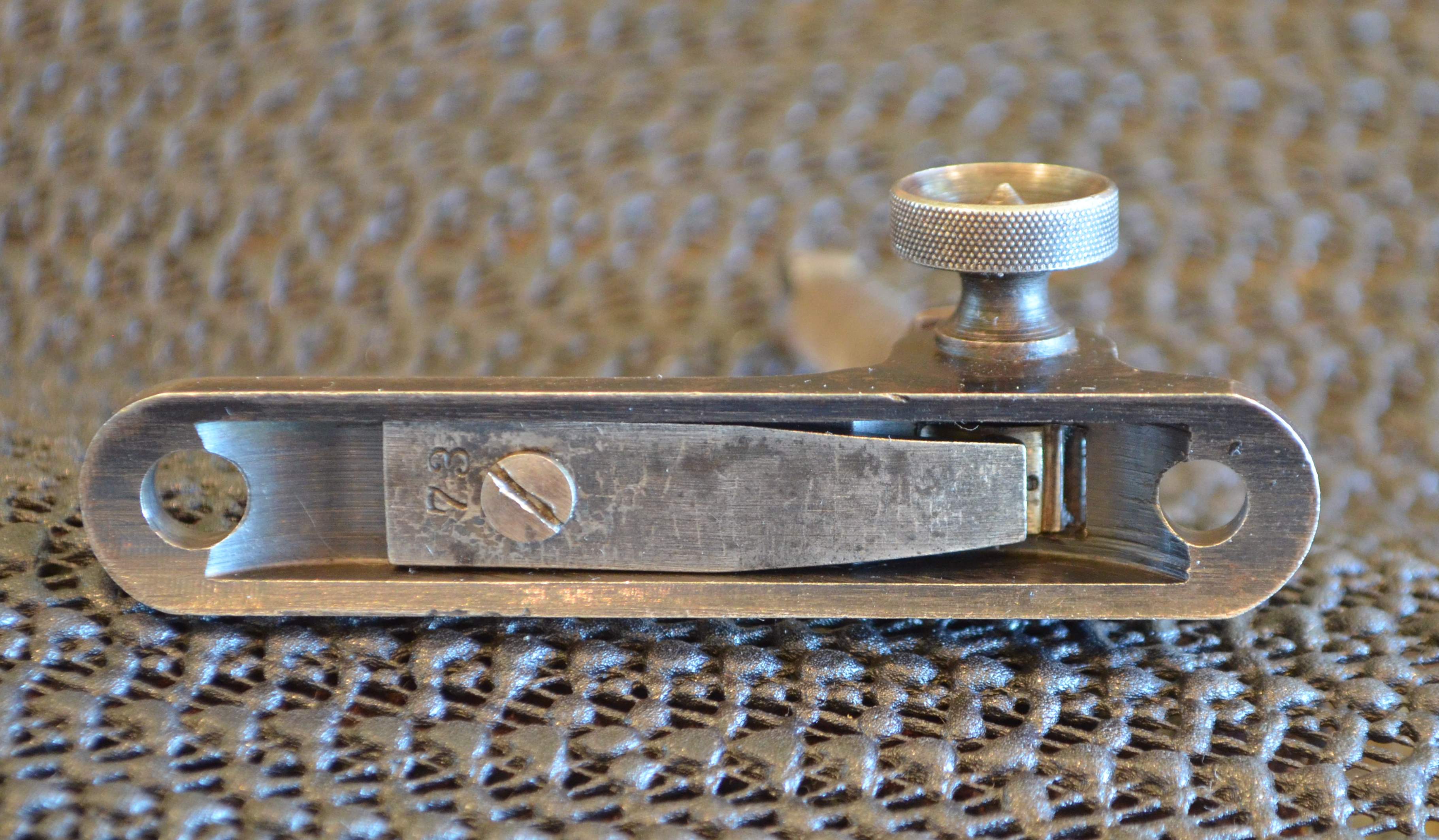December 30, 2011
 Offline
OfflineHey thanks Peter. I doubt William Lyman, way back in the 1880s-90s, realized the conversations he would generate among some future sight nerds when he decided to change the stamping for a while 
May 2, 2009
 Online
Onlinewin38-55 said
Did all the early, fine-knurled Lyman tang sights have a letter stamped on their base? I have one that fits my 1873, but there is no letter stamped on its base, just the patent dates on the top of the base, and at the base of the stem.
I just checked all my thin base 73 tang sights fine knurled and course. What I’m finding is as a general rule if there is patent date on the top of the base there is no application code on the bottom and the ones with codes on the bottom don’t have the patent date.
Bob
WACA Life Member--- NRA Life Member---- Cody Firearms member since 1991 Researching the Winchester 1873's

Email: [email protected]
December 30, 2011
 Offline
OfflineHey Peter
Yep, screw in aperture but no “2” marked anywhere. The sights I have say either “D” or “DA” only, no “1” or “2”.
According to what’s written in the Lyman Centennial Journal and Old Gunsights, the No.2 sights came out in 1894. Maybe that will help you in some way as far as the markings go.
September 29, 1993
 Offline
OfflineWACA Life Benefactor Member
NRA Life Member
November 20, 2011
 Offline
OfflineAgree with Bob on the thin base sights with finely knurled/swirled stems. None of mine have codes underneath. From what I’ve seen, this is true for sights made for other gun manufacturers. Whitney, Marlin, others.
Rick’s sight is different, the thick base springs are almost always marked for either the 76 or 73. Only difference in the sights is the height of the Lyman stem, and the length of the spring (which governs the angle of the stem, as it varies by model due to the more severe drop in the 73). Hence only the spring was marked, rather than the otherwise identical bases.
Will
April 15, 2005
 Online
OnlineRick Hill said
Here are some pictures of an early No. 1 Lyman tang sight that I picked up in Cody this year. The patent date is marked “PAT. JAN 28. 79”. Interestingly, the application code is stamped “73” and is applied to the spring rather than to the base itself.

Rick,
Awesome example of a very early thick-base thumb-screw Lyman tang sight !
Bert
WACA Historian & Board of Director Member #6571L

May 2, 2009
 Online
OnlineWACA Life Member--- NRA Life Member---- Cody Firearms member since 1991 Researching the Winchester 1873's

Email: [email protected]
July 8, 2016
 Offline
OfflineBob……you say “the bases have been filed or sanded to level the sight to the gun” on some of your old Lyman sights…I’ve always been under the impression that one would use some type of shim to do that. I have purchased sights that came with some old brass shims, and some with paper shims. Do you think way back then they filed the bases verses using shims? Makes sense actually. Peter
PS: could someone tell me how to set the time code here? I posted this at 7:29 AM but it shows 2:29 PM. I have no idea how to change that. The forum time code on my screen says UTC 0. Thanks
May 2, 2009
 Online
OnlinePeter,
Most of the time people used papers shims since it is not destructive and I think that is how Lyman tells people to do it in the instruction sheet but there are sights I have seen the bottoms of the sight filed from people that like to do thing the hard way or just don’t know any better.
To set your time zone. Click on your profile button near the top of the page then click “Edit Options” then click “Edit Display Options”.
Bob
WACA Life Member--- NRA Life Member---- Cody Firearms member since 1991 Researching the Winchester 1873's

Email: [email protected]
1 Guest(s)


 Log In
Log In

















